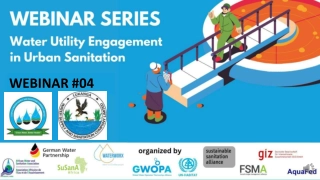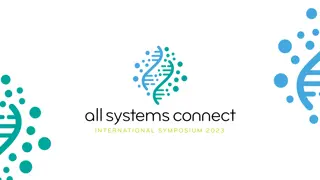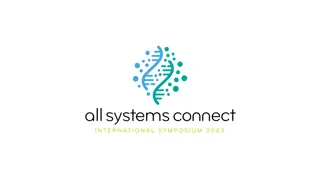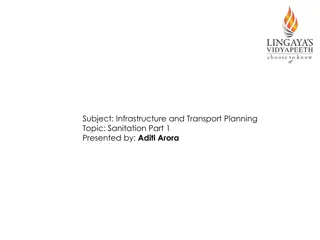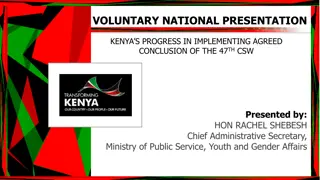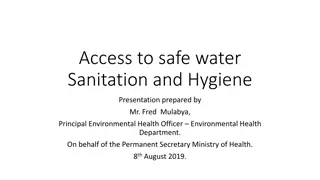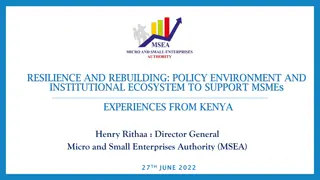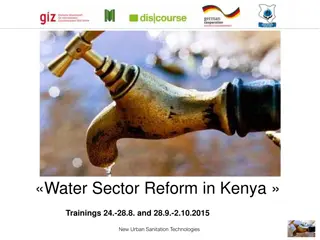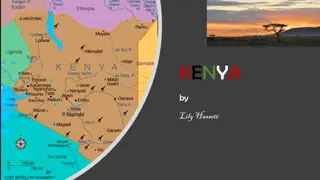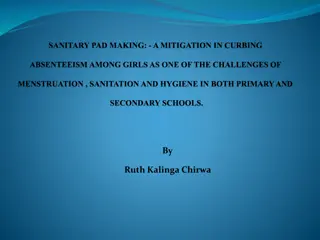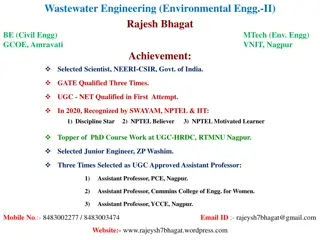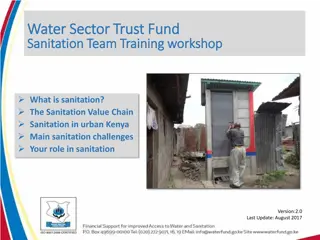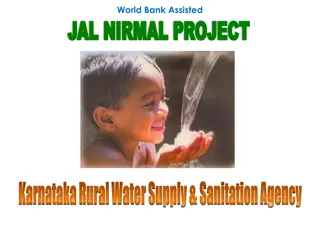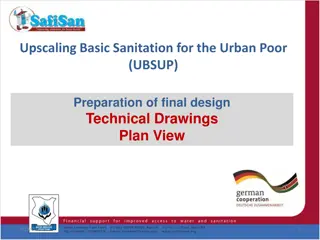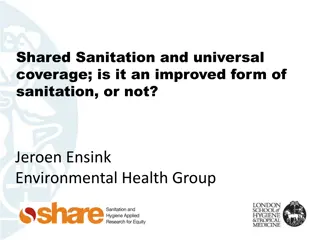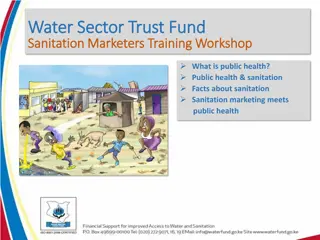Sanitation Challenges and Solutions in Kenya
Sanitation in Kenya faces significant challenges, with only about 31% of households having overall access. The Water Supply and Sanitation Collaborative Council defines sanitation as the management of human excreta, wastewater, and solid waste, along with hygiene promotion. The Sanitation Value Chain involves toilets, transport, treatment, and business opportunities for improved health and hygiene. Various approaches to sanitation include improved sanitation, on-site sanitation, environmental sanitation, and ecological sanitation. Despite the challenges, organizations like the Water Sector Trust Fund are working towards improving sanitation in urban areas.
Download Presentation

Please find below an Image/Link to download the presentation.
The content on the website is provided AS IS for your information and personal use only. It may not be sold, licensed, or shared on other websites without obtaining consent from the author. Download presentation by click this link. If you encounter any issues during the download, it is possible that the publisher has removed the file from their server.
E N D
Presentation Transcript
Water Sector Trust Fund Water Sector Trust Fund Sanitation marketers Training Sanitation marketers Training What is sanitation? The Sanitation Value Chain Sanitation in urban Kenya Main sanitation challenges 1
What is sanitation? What is sanitation? For many organisations, hygiene promotion is seen as an integral part of sanitation. The Water Supply and Sanitation Collaborative Council defines sanitation as: "The collection, transport, treatment and disposal or reuse of human excreta, domestic wastewater and solid waste, and associated hygiene promotion. _____________________________________ The Water Supply and Sanitation Collaborative Council (WSSCC) is a global membership organization hosted by the United Nations that specialises in sanitation and hygiene for poor people in countries with severe sanitation and hygiene needs (Quote from Wikipedia, keyword: sanitation) 2
What is sanitation? What is sanitation? The term "sanitation" is applied to a wide range of subjects such as: Improved sanitation - refers to the management of human faeces at the household level. This terminology is the indicator used to describe the target of the Millennium Development Goal on sanitation On-site sanitation - the collection and treatment of waste is done where it is deposited. Examples are the use of pit latrines and septic tanks Environmental sanitation - the control of environmental factors that form links in disease transmission. Subsets of this category are solid waste management, water and wastewater treatment and noise and pollution control treatment, industrial waste Ecological sanitation - an approach that tries to emulate nature through the recycling of nutrients and water from human and animal wastes in a hygienically safe manner 3
The Sanitation Value Chain The Sanitation Value Chain What is the sanitation (value) chain according to you?............... 4
Toilets, transport & treatment and business opportunities for improved health & hygiene for a better, cleaner environment Presentation Outline 5
Sanitation Situation in Kenya Sanitation access nationally according to the WHO/UNICEF JMP for Water Supply and Sanitation(2010) Overall access = +- 31% 8% of urban households in low income areas have an improved toilet 47% of the urban low income area population use an improved toilet 28% of urban households in low income areas share an improved toilet 20% of all urban households have access to a sewer
Sanitation situation in urban Kenya Urban sanitation coverage figures % use 42.17 18.37 12.43 7.80 6.94 4.04 3.85 2.29 1.53 0.39 0.18 No. Facility 1. Traditional Pit Latrine 2. Improved Pit Latrine 3. Pour Flush Toilets 4. Toilet Linked to Septic Tank 5. Toilet Linked to Sewer 6. Public (Fee Paying) Facility 7. Other Sanitation Facility 8. Ventilated Improve Pit Latrine 9. Open defecation (OD) 10. Flying Toilets 11. Others (Biogas, UDT, Open Discharge Sanitation facilities and practice used in Kenya s urban low income areas (Source: MajiData)
Sanitation challenges Some of the main sanitation challenges are: Toilets & water: Low access to sanitation at the household/plot levels Lack of water to improve hygiene ____________________________ Infrastructure: Limited network of sewer systems (settlement & town level) Few Water Service Providers with functioning wastewater treatment plants ____________________________ Policy: Poor designs of affordable & sustainable sanitation solutions for the poor Poor sanitation monitoring & tracking for reporting Over-expectation that waterborne solutions will be implemented in urban low income areas Non-prioritisation of urban low income areas by the Sector
Thank You Thank You Let us succeed together! Let us succeed together! 9



